 Weird Stuff
Weird Stuff  Weird Stuff
Weird Stuff  Mysteries
Mysteries 10 Tragic Disappearances and Deaths in Joshua Tree National Park
 History
History 10 Ways Childhood Really Sucked in the Old West
 Music
Music 10 Name Origins of Famous Bands from the 1990s
 Religion
Religion 10 Biggest Turnarounds by the Catholic Church
 Weird Stuff
Weird Stuff 10 Unbelievable Times Laws Had Unintended Consequences
 Humans
Humans Ten Historic Women Who Deserve Way More Credit Than They Got
 Movies and TV
Movies and TV 10 Films That Spawned Major Lawsuits
 History
History Ten Times Towns Were Wiped Off the Face of the Earth
 Creepy
Creepy 10 of the Most Disturbingly Haunted Public Houses in the UK
 Weird Stuff
Weird Stuff 10 Niche Subcultures That Are More Popular Than You Might Think
 Mysteries
Mysteries 10 Tragic Disappearances and Deaths in Joshua Tree National Park
 History
History 10 Ways Childhood Really Sucked in the Old West
Who's Behind Listverse?

Jamie Frater
Head Editor
Jamie founded Listverse due to an insatiable desire to share fascinating, obscure, and bizarre facts. He has been a guest speaker on numerous national radio and television stations and is a five time published author.
More About Us Music
Music 10 Name Origins of Famous Bands from the 1990s
 Religion
Religion 10 Biggest Turnarounds by the Catholic Church
 Weird Stuff
Weird Stuff 10 Unbelievable Times Laws Had Unintended Consequences
 Humans
Humans Ten Historic Women Who Deserve Way More Credit Than They Got
 Movies and TV
Movies and TV 10 Films That Spawned Major Lawsuits
 History
History Ten Times Towns Were Wiped Off the Face of the Earth
 Creepy
Creepy 10 of the Most Disturbingly Haunted Public Houses in the UK
Top 10 Lesser-Known Texas Terrors
Texas. The Lone Star State. The second largest state in the US is known all around the world. The stereotypical image is of a land full of tall, beefy cowpokes in ten-gallon Stetsons and Levi’s jeans. The positive side of Texas is its local pride (residents more often than naught think of themselves as Texans first, Americans second), rugged individualism, and its colorful and multi-ethnic history. Texas is a crossroads culture, with Spanish, Mexican, and Anglo-Celtic strands predominating. Texas is also home to a thriving Czech culture and features of thousands of German speakers whose dialect is so unique that it is called Texas German.
SEE ALSO: 10 Reasons The Terrorists Hate Us
There is a dark side to Texas too. Long before the days of Comanche raids and race riots like 1906’s Brownsville Affair, Texas was awash in blood. Some of the worst mass shootings in American history have occurred in Texas: twenty-three killed at Luby’s Cafeteria in 1991, five Dallas police officers killed in 2016, twenty-six worshippers killed at a Sutherlands Springs church in 2017, and twenty-two killed in El Paso just this August. Guns are synonymous with Texas, a place that still feels like the wild frontier.
Besides blood and guts, Texas is known for its tall tales, many of which feature ghosts and ghouls prominently. In this list, the real and supernatural will meet as real-life crimes and ghost stories will be discussed. A word of warning: the best known and most written about Texas killers like Dean Corll, the Texarkana Phantom, Joe Ball, and Henry Lee Lucas will not be discussed. This list seeks to highlight some of the lesser known terrors of Texas.
10 The Ghosts of Yorktown Memorial Hospital
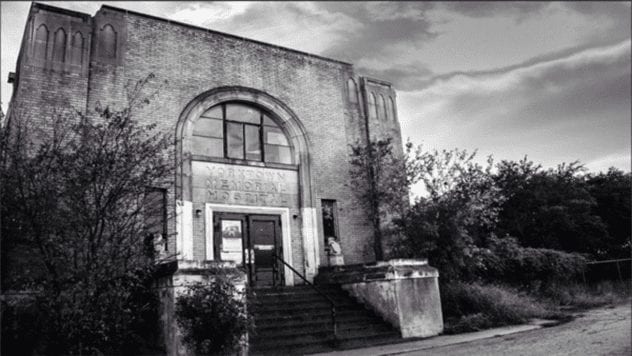
Deep in Southern Texas, between the city of San Antonio and the Gulf Coast, lies Yorktown. The town was created as a result of the Old Indianola Trail, which connected the seaport of Indianola with the city of New Braunfels. For one reason or another, there seems to be something rotten about Yorktown. One of the chief causes of this rottenness is the supposedly haunted Yorktown Memorial Hospital.
Before closing its doors for good in 1980, the hospital, which was founded by the Catholic Felician Sisters, catered to patients seeking recovery from drug and alcohol abuse. It seems that many of the tortured souls who checked into the hospital have never left. For over thirty years the people of Yorktown have reported experiencing paranormal events inside of the abandoned hospital. Some of these experiences include the sounds of music floating through the hallways, talking dolls, and miasmic black shadows with piercing red eyes.
According to professional ghost chasers and students of the supernatural, the Yorktown Memorial Hospital gets its bad energy from the fact that some 2,000 patients died there between 1950 and 1980. It should be mentioned though that Yorktown is currently cashing in on the hospital’s haunted reputation, for Halloween tours do take place there. Still, given that so many have reported seeing strange lights and hearing inexplicable sounds, the Yorktown Memorial Hospital may be spook central after all.[1]
9 Yorktown Wendigo
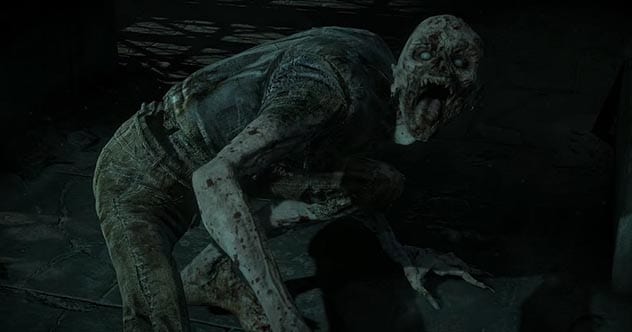
Sticking with Yorktown, the small town is supposedly home to something far worse than ghosts. According to eyewitnesses, many of whom have posted their experiences online for all to see, Yorktown is home to the dreaded wendigo. More often associated with the frigid woods of the far north, the wendigo is a beast taken from Algonquian folklore. Tales of the wendigo include stories of the creature as a massive, Bigfoot-like snow beast to a skinwalker that drives people to murder. Some wendigos even possessed the bodies of those who froze to death during lonely hikes in snow-covered mountains. The only consistency in the wendigo tales is that the creature is always described as ravenous—ravenous for blood.
Texas does not get as cold as Minnesota or Manitoba, but, according to Texas resident Izel Vargas, a bald and black-eyed wendigo roams Yorktown on misty nights. Scarier still, the wendigo of Texas is just one of the many skinwalkers that apparently calls Texas home. As for the Yorktown wendigo, there is a reddit page dedicated to exploring more stories about the town’s resident pale monstrosity.[2]
8 The Goat Man of Lake Worth
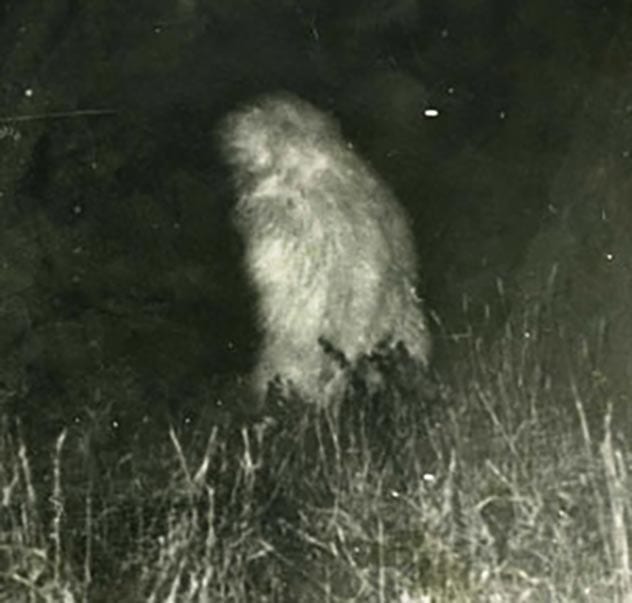
It all started in July 1969. Across from Greer Island, on the north side of Texas’s Lake Worth, a crowd of startled spectators saw a creature that was neither a goat nor a man. In fact, as they claimed, the creature was a “fishy goat-man.” One member of the crowd had enough of their wits left to snap a photo of the monster. They captured a furry, hazy, and large white thing standing tall among the weeds.
Later known simply as the Lake Worth Goatman, this strange cryptid is not America’s only half-goat monstrosity, but it may well be its most documented. After first appearing in an article in the “Star-Telegram” newspaper, the Goatman quickly became a local celebrity, with area residents investing in traps and bullets in order to capture or kill the creature. Goatman hunters are so numerous that the website for the Tarrant County Historical Journal felt it necessary to post a warning about going after Greer Island’s most famous resident.
While written off as a hoax, the Goatman, which eyewitnesses claimed jumped on parked cars and grabbed at least one female on the night of July 9, 1969, was the center of several police reports for two months. Similarly, one of the cars attacked by the monster was found to have an 18-inch gash on one of its side doors. Local police investigated, but came up empty. Several decades later, in 2005, a reporter for the “Star-Telegram” received a letter lacking a name and forwarding address. The bizarre letter offered a confession. The writer said that they were once a student at North Side High School, and on July 9, 1969, they went out to Lake Worth wearing a mask. They did it just to scare their classmates.
This letter has never been verified, but it is more than likely true that the Goatman was some dumb teenager in a fur suit. But, on the off chance that a half-man, half-goat roams Lake Worth, it would be a good idea to visit the location with a camera and a well-oiled hunting rifle.[3]
7 Rumors of the Devil

The 1980s were the decade of Reaganomics, Margaret Thatcher, popular excess, cocaine, and heavy metal. The 1980s were also the age of the “Satanic panic,” a protracted hysteria that blamed everything from MTV to “Dungeons & Dragons” for the supposed upsurge in Satanic crimes. The good people of Texas were not immune to this virus. Truth be told, one of the most infamous examples of the Satanic panic occurred in the small town of Childress between 1988 and 1991.
One evening, not long after the sun had set over the western horizon, a terrible discovery was made. Tate Rowland, a local teenager, was found hanging from a tree. The sheriff’s department interviewed everyone in the Rowland family, and to a person they said that Tate was not suicidal. However, the one eyewitness in the case contradicted this, saying that he saw Tate hang himself. The death was ruled a suicide. That’s about where things stood until May 1991, when 27-year-old Terrie Trosper, Tate’s older sister, was found dead in her own bed. Two deaths anywhere is alarming, but when it happens in the same family in a town of just 5,800 people, it cannot be a coincidence, right?
According to the science, that is exactly what the deaths were—a tragic coincidence. Despite family assertions to the contrary, investigators learned that Tate’s death was a suicide caused by a recent break-up with his girlfriend. As for Terrie, an autopsy found that she had died after choking on her own vomit. Terrie’s blood also showed high levels of the drug Elavil, which is most often used to treat anxiety and major depressive disorder.
These official findings were not made public in time to stop a panic. The rumor mill of Childress went to work even before Tate Rowland was buried. Reports flooded into the police saying that strange and unknown people attended Tate’s funeral, including one young male who chanted the word “suicide” throughout the service. This rumor ran in conjunction with several police reports filed in November 1988, which claimed that a truck carrying unidentified persons was seen trying to pick up children from local schools. Some even said that Tate himself was a member of a Satanic cult. There were even reports of people in black robes hanging out in abandoned buildings. One report went so far as to say a local teenager was seen eating the Bible.
Things took a very strange turn when Darwin Wilks, a friend of Terrie’s, tried to commit suicide by swallowing between 25 and 30 tablets of Elavil. His suicide note read: “I know something that the cops don’t know. I know who killed Terrie. I can’t live anymore”. A new autopsy on Tate Rowland’s body discovered that he too had taken Elavil before his death. Even more shocking were the findings of the second autopsy on Terrie, which found that she had contusions on her inner thighs and in her mouth. These wounds indicated that Terrie had been assaulted by at least two men prior to her death.
In the wake of these findings the legendary Texas Rangers put out a pamphlet outlining what to look for in ritual murder cases. Although Tate Rowland is still considered a suicide, and even though no murder charges were ever brought in the case of Terrie Trosper, many people down in Childress think that dark forces were at play back in those days.[4]
6The Tragic Birth of the Amber Alert System

When a child goes missing or is abducted in the United States, the nationwide Amber Alert system is activated. This system inundates local news networks and cell phones with information about the missing child and any potential suspects. As with most pieces of legislation, the Amber Alert system was born out of a horrific tragedy.
On January 13, 1996, 9-year-old Amber Hagerman of Arlington, Texas was entertaining herself by riding her bike in the parking lot of an abandoned grocery store. Amber’s lazy afternoon was interrupted by a man in a black pickup truck, who snatched up the little girl and threw her in the cab. The only eyewitness, Jimmie Kevil, called the local police, who in turn began searching for Amber alongside fifty other municipal, state, and federal officers.
Sadly, all of these searchers could not find Amber in time. Five days after her abduction, a passerby found Amber’s corpse in a creek four miles away from the abandoned grocery store. Amber’s killer had snuffed out her life by cutting her throat in half. The fact that Amber was found naked and bruised confirmed that Amber’s killer had been motivated by lust.
As the weeks wore on, Texas authorities and the FBI told the press about some of their pet theories. They believed that the killing was a spur-of-the-moment act. They also suggested that some personal misfortune, such as a break-up or a loss of employment, had driven the killer to lash out at the little girl. More concrete help in the Amber Hagerman case came in 1997, when the Dallas Amber Plan was created. The plan would later become Amber Alert system in 2000.
Amber Hagerman’s name is known, but her killer remains as elusive as ever. The murder of Amber Hagerman is arguably Texas’s biggest cold case.[5]
5 The Eyeball Killer
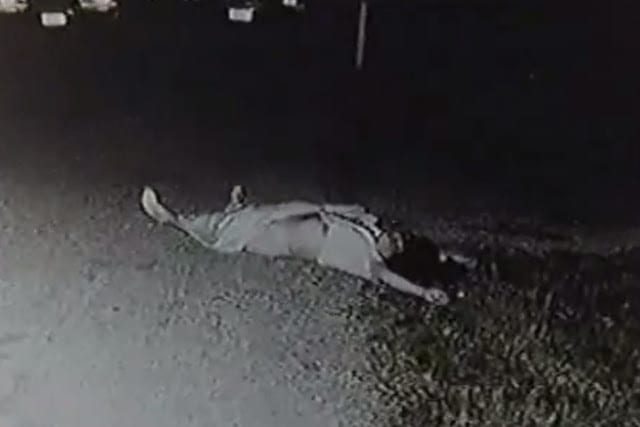
Beginning in late 1990, prostitutes in Dallas began dying at an alarming rate. It was obvious that someone was doing the killing, and that someone was a seriously sick individual. The killer signed all of his handiwork with his gruesome calling card—the removal of victims’ eyes.
The man later known as the Eyeball Killer was born Charles Frederick Albright in Amarillo, Texas in the Depression year of 1933. Adopted by the Albright family a few weeks after his birth, young Charles grew up in a comfortable, middle class life. But, underneath the surface, there was trouble brewing. Delle Albright, Charles’s mother, believed in harsh discipline. When Charles misbehaved, Delle would tie him to the bed. There were also times when Delle got pleasure out of making Charles wear girl’s clothing. When Charles was eleven, Delle enrolled him in a taxidermy class. Charles took to taxidermy like a natural, and before long he was skinning and stuffing dead birds. The only problem was that Delle would not pay for fake eyes for the dead animals, so Charles was told to use buttons instead.
Charles was an intelligent boy, but prone to mischief. At age 15 in 1948, he contracted crabs after sleeping with a local prostitute. A year later, he stole $380 from a cash register. Two years later, Charles was sent to jail for the first time after he was convicted of theft and receiving stolen property. Charles would be in and out of trouble for the rest of his life. In 1951 he broke into the Arkansas State Teacher’s College and stole nude pictures from a female dormitory. On one of these pictures Charles glued the eyes that he had cut out of a picture of a friend’s ex-girlfriend. Charles continued to steal, got married to a woman named Bettye Nestor, and, in 1981, was accused of molesting a 9-year-old girl. Four years later, Charles admitted to molesting the preteen daughter of a church friend. He received probation.
The first of the Eyeball Killer murders was discovered on December 13, 1990. The corpse belonged to 33-year-old prostitute Mary Lou Pratt. She had been found partially nude in a field. Albright had sexually assaulted Pratt before shooting her execution-style in the back of the head. The autopsy found that Pratt’s killer had removed her eyeballs with surgical skill. Two months after this homicide, 27-year-old prostitute Susan Peterson was found dead about a mile away from the Pratt crime scene. She too had had her eyeballs removed. A third prostitute was discovered on March 19, 1981. This victim, 45-year-old Shirley Williams, was found not far from an elementary school. Williams had been shot in the head like the others, and the cuts on her face indicated that her eyeballs had been removed with an X-ACTO knife.
Dallas now had a serial killer on its hands. It also had a major breakthrough in the form of eyewitness Veronica Rodriguez. Rodriguez, 26, was a known prostitute and drug addict. Therefore, few believed her when she said that she had seen Pratt’s murder. In fact, Rodriguez had been involved in a threesome with Pratt and her killer on the night of homicide. After the john had struck her in the head with a gun, Rodriguez had sought shelter in the nearby home of a truck driver named Axton Schindler. No clues were found in Schindler’s house, but investigators did learn that Schindler’s landlord was a 57-year-old high school science teacher and carpenter named Charles Albright. Albright owned other properties, two of which was very close to the three crime scenes.
A sheriff’s deputy recalled that Charles Albright’s name had come up on a tip line. A caller had told the deputy that Albright had once dated Pratt. The caller also said that Albright had an unhealthy fascination with eyes and owned a large collection of X-ACTO knives. Charles Albright was arrested on March 22, 1991. Police found in his home not only several X-ACTO blades, but books on serial killers and a copy of Gray’s Anatomy. While the murder weapons and missing eyeballs were never found, hair fibers found in Albright’s truck linked him to all three murders. However, Albright was only convicted of the murder of Shirley Williams. Today he is still behind bars in Lubbock, Texas, counting down the endless days of a life sentence.[6]
4 The Servant Girl Annihilator
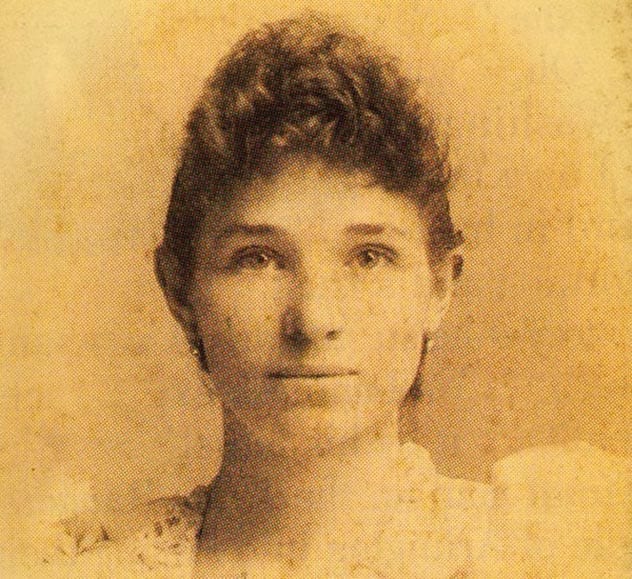
The capital city of Austin, Texas is known for being “weird.” Austin is a deeply Democratic city in a conservative Republican state. Austin is also home to hipsters of all stripes. Well, despite this, Austin today can never be as strange as the Austin of 1884-1885. During that particular epoch, a frightening serial killer roamed the city. No servant girl was safe.
The first murder came to light on December 30, 1884. The victim was an African American cook named Mollie Smith. Smith was found in a rare patch of Texas snow. Her body showed that she had been stabbed in the stomach, chest, arms, and legs. She had also been struck in the head with an ax. The next victim, Eliza Shelly, was found dead on May 7, 1885. Like Smith she was a black cook, and also like Smith she had been struck in the head with an ax.
The attacks ratcheted up after the murder of Eliza Shelly. Irene Cross was stabbed several times with a knife and was almost scalped on May 23rd; 11-year-old Mary Ramey was raped and stabbed through the ear on August 30th; and Gracie Vance and Orange Washington were found bludgeoned to death (one report likened their heads to jelly) on September 28th. The Annihilator was still not done. On Christmas Eve 1885, he struck twice in one night. The victims were 17-year-old Eula Phillips and Susan Hancock. These murders broke with the earlier pattern, for both women were killed in their homes and both were white.
As quickly as the murderer came to town, he vanished. By the end of 1885, the Servant Girl Annihilator was no longer committing crimes. All told, he killed eight people: seven women and one man. He mostly preyed on working class black women, and his weapons of choice were the knife and the ax. At first the Austin police blamed Jimmy Phillips and Moses Hancock, claiming that the pair had killed Eula Phillips and Susan Hancock. The authorities said that the two white men were copycat killers who tried to hide their crimes by making them look like the work of the local black serial killer. Phillips was convicted, but had his conviction overturned after six months. Hancock’s trial in ended in a hung jury.
Since that time, several suspects have been put forward. Author Shirley Harrison believes that Austin’s Servant Girl Annihilator was none other than London’s Jack the Ripper. This ideas was thrown around in the 19th century too, except in Harrison’s rendering, the killer is the Englishman James Maybrick not an unknown Malay ship’s cook named Maurice. Another far-fetched suspect is the writer O. Henry, who not only lived in Austin during the time of murders but also coined the name “Servant Girl Annihilator.”
The most plausible suspect was put forward by “Texas Monthly” writer Skip Hollandsworth, who claims that a 19-year-old black worker named Nathan Elgin committed the crimes. Elgin worked near most of the crime scenes, and in 1886 he was shot and killed by Austin police while trying to attack a woman with a knife.[7]
3 Angel of Death

Nurses who kill are especially disgusting. There are few things that churn the stomach more than murderers who had once taken an oath to protect life. Texas nurse Genene Jones is one such revolting specimen.
Between 1981 and 1982, a string of suspicious deaths occurred at the pediatric intensive care unit of the Medical Center Hospital in San Antonio. One of the nurses who worked in that ward was 33-year-old Genene Jones. The adopted daughter of a nightclub owner and a former beautician, Jones was a mother of two when she abruptly quit her job as a nurse at the Medical Center Hospital and relocated to the town of Kerrville, Texas. Jones’s former colleagues described her as an intelligent woman, but very coarse and prone to making loud and lewd jokes.
Jones was arrested and charged with the murder of 15-month-old Chelsea McClellan in October 1983. Investigators said that Jones had injected McClellan with a toxic amount of a muscle relaxant called succinylcholine. Less than a year later, Jones was convicted of McClellan’s murder and sentenced to 99 years in prison. Also in 1984 Jones was sentenced to 60 years for the attempted murder of Rolando Santos. Still, despite these convictions, San Antonio citizens felt betrayed. After all, over sixty toddlers had died at the hospital between 1981 and 1982, and most suspected Jones of being the culprit. During a jailhouse interview in October 1998, Jones all but admitted to killing all of the children, saying: “I really did kill those babies”. In the same recording, Jones backtracked a little by clarifying that it was the voices in her head that were truly responsible for the intentional overdose deaths.
Now, as you read this, Jones is set to stand trial once again. In September 2019, the 69-year-old convicted killer was officially accused of murdering Richard “Ricky” Nelson on July 3, 1981; Rosemary Vega on September 16, 1981; Paul Villarreal on September 24, 1981; Joshua Sawyer on December 12, 1981; and Patrick Zavala on January 17, 1982. Shockingly, this new trial comes two years after Jones was scheduled to be released from prison as part of a new statewide push to lessen prison overcrowding.[8]
2 Headless in Houston

1979 was a boom year for oil in Houston. The biggest city in the state, Houston got a lot bigger in the late 1970s thanks to American migrants who came from all over in order to get rich quick in East Texas. A few of these migrants met something other than good luck in Houston. In just two months in 1979, five people were murdered by a killer who took pleasure in decapitation. Forty years later, the killer remains uncaught, and Houston cold case investigators don’t have a single fingerprint to help them.
The first to die was Alys Elaine Rankin. On July 27, 1979, Bob Smith, one of Rankin’s coworkers, showed up at the Orchard Apartments located in the 5900 block of Glenmont in the Gulfton neighborhood of southwest Houston. He was there to give Rankin a ride to work. Smith, noticing that the 33-year-old Rankin, wasn’t outside to meet him, went up to her apartment. Inside Smith found Rankin in her bed. She was naked and dead. Her killer had tied her feet to the bed, while he had placed a pillow on her upper body. Smith removed the pillow and found that Rankin was missing her head. Homicide detectives would later add that Rankin had been sexually assaulted.
Two weeks after the discovery of Rankin’s corpse, another body was found. This one belonged to Mary Michael Calcutta, a new Houston resident originally from Pittsburgh, Pennsylvania. The 25-year-old woman was found dead in her bathroom. There were differences between the Rankin and Calcutta crime scenes. Namely, Calcutta was found fully clothed and had had her throat slit. Calcutta had also fought her killer tooth and nail, which was obvious by the fact that Calcutta’s body was riddled with defensive wounds. However, investigators could not overlook the fact that Calcutta’s apartment was located only two floors above Rankin’s. Calcutta had also been sexually assaulted.
Amazingly, this was not the only weird thing about this case. On the same day that Calcutta’s corpse was found, an exterminator found the body of 26-year-old Doris Lynn Threadgill inside of a townhouse in northwestern Houston. Threadgill’s killer had cut her throat so bad that she had been virtually decapitated. The next body found belonged to 16-year-old Joann Huffman, who was found dead inside of Watonga Park on October 4, 1979. On the same day, at a used car lot, the body of 18-year-old Robert Spangenberger was found inside the trunk of a white Dodge car. Spangenberger’s head had been removed.
Houston investigators are not uniform in their opinions about these crimes. Some argue that it was all the work of one madman. Besides the Orchard Apartments connection between Rankin and Calcutta, Huffman’s body was found four miles away from the Threadgill crime scene. Eyewitnesses also heard screams and gunshots near Threadgill’s house on the night before both Huffman and Spangenberger were found. Other homicide investigators discount the single killer theory, arguing that Rankin and Calcutta were killed by the same person, but Huffman and Spangenberger were killed by different people. Some even argue that Threadgill’s murder is unconnected to the other four.[9]
1 Angel of the Railroad

The golden age of the hobo has come and gone. Despite this, America’s railroads are still used by hundreds, if not thousands of roving vagrants. Many of these freight jumpers wind up in Texas. One man who used the rails was Mexican immigrant Angel Resendiz, who frequented the rails in Texas and the Midwest in order to find farm work. Besides farming, Resendiz worked as a serial killer. During his reign of terror, he killed between nine and fifteen people, thus earning him the nickname of the Railroad Killer.
Resendiz was born in Puebla, Mexico in 1959. Raised by a single mother until the age of six, Resendiz was passed around between family members until he went back to his mother for good at age 12. Resendiz earned quite a rap sheet down in Mexico after dropping out of school in the seventh grade. Not long after his arrest by Texas Rangers in 1999, his mother, 52-year-old Augustina Solis de Resendiz, claimed that her son turned mean after being gang raped by a crowd of boys when he was 12 or 13.
Whether or not this true may never be known. What is a fact is that Resendiz began killing sometime in 1986. By that point he had illegally crossed into the US on several different occasions, and it was after one such crossing that he murdered an unnamed homeless woman. Resendiz shot this woman four times before throwing her body away like trash inside of a farmhouse in Bexar County. In that same year, Resendiz was arrested in Laredo, Texas and convicted of using a fake US birth certificate. He was sentenced to 18 months in jail.
Resendiz apparently learned nothing after this brush with American justice, for he was arrested again in May 1991. This time he was deported back to Mexico after being caught trying to forge Social Security cards and illegally purchase weapons. Months after this deportation, Resendiz slipped back into Texas and murdered 33-year-old Michael White on July 19, 1991. White’s body was found full of bullet holes in the front yard of a San Antonio home.
For the next six years, Resendiz continued to live an itinerant lifestyle, drifting back and forth between the United States and Mexico. Then, in March 1997, Resendiz unleashed his bloodlust. On March 23, 1997, 16-year-old Wendy Von Huben, a runaway from Illinois, was found strangled to death alongside 19-year-old Jesse Howell. This crime scene placed Resendiz in Florida, for the pair were found along a pair of train tracks between Jacksonville and Tampa. In July 1997, it is believed that Resendiz beat a man to death with a pipe in Colton, California. Next, on August 29, 1997, 21-year-old Christopher Maier, a student at the University of Kentucky, was hit in the head with a 50-pound rock. Maier died during the attack, while his girlfriend was raped. The pair had been accosted after taking a shortcut that included walking over some railroad tracks.
Subsequent victims included 87-year-old Leafie Mason in Hughes Springs, Texas; 81-year-old Fannie Whitner Byers in Carl, Georgia; 45-year-old Claudia Benton in Houston; 73-year-old Josephine Konvicka in Fayette County, Texas; 26-year-old schoolteacher Noemi Dominguez in Houston; and 80-year-old George Morber and his 51-year-old daughter Carolyn Frederick in Gorham, Illinois. Most of these crimes involved sexual assault and weapons like axes and pickaxes.
After the last slaying in Illinois, Resendiz was placed on the FBI’s Ten Most Wanted List. Although he managed to escape back into Mexico, his family convinced him to cross back over into El Paso, where he surrendered to Texas Ranger Drew Carter. While Resendiz’s fingerprints were found inside the Morber home, and although Resendiz was seen in Weimar, Texas after the murders of 46-year-old Norman Sirnic and his 47-year-old wife Karen (Resendiz sexually defiled Karen’s corpse), the Railroad Killer was only convicted in court of the murder of Claudia Benton. At his trial, Resendiz pleaded not guilty by reason of insanity, stating that he was an angel sent to Earth by God in order to kill the sinful. Resendiz ultimately asked for the death penalty and got it. He died via lethal injection on June 27, 2006. His last words were reportedly: “I deserve what I am getting”.[10]
For more lists just like this one check out Top 10 Reasons The Suffragettes Were Actually Terrorists, and 10 Strange And Brutal Acts Of Violence From Texas
About The Author: Benjamin Welton is a freelance writer in Boston.








